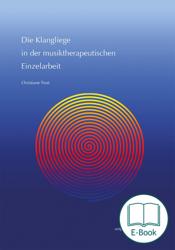In this book the author presents and analyses in detail the methods she uses in her work with the body monochord. Her research is different to previous studies, which mainly concentrated on only partial aspects of working with monochrome sounds. In some therapy sessions the author demonstrates the decisive factors involved in her work and how this dynamic process can strongly influence the development of physical and psychological well-being. The multimodal approach she describes can also be adapted to an ambulant setting for those considered to be no longer suitable for therapy.
In her research in the last ten years Christiane Trost has started to focus on the uses of the body monochord in music therapy. As a result of her investigations she has been able to demonstrate the effects of sound therapy on various illnesses. For example: coping with fear, rheumatism, epilepsy, insomnia, gastrointestinal somatoform disorder, recurrent depressive episodes, pain disorder, postoperative nerve injury, grieving, social phobia, anorexia nervosa, tinnitus, regulation of bone and blood system in osteoporosis with pathological results of the blood test with unclear genesis (leukocytopenia, thrombozytopenia).
Sound instruments with equally tuned strings are firmly established in numerous therapeutic fields and the focus of numerous clinical studies. However, most evidence based research, using a large group of participants, is conducted into only partial aspects of the physical and psychological process and only in one session, where as the author has investigated the whole psychodynamic process in several therapeutic courses of treatment over many months.
Based on several therapy courses, the body monochord is shown to be a highly effective tool in the psychotherapeutic context (creating a secure maternal sound space). The results of case studies with participants who could no longer be helped with other therapies or who are deemed to be in medical border areas are particularly impressive. Sounds are experienced in a multimodal setting and the resultant interaction of emotional, physical and artistic expression leads to a form of conscious understanding. Consequently, the mental state, self awareness, basic body feeling and general health of clients are approached in a holistic manner.
How this instrument can influence physical and psychological well-being and how these procedures can be used in the treatment of different illnesses is comprehensively explained. Her reasons why therapeutic work with the body monochord is so significant are especially convincing, at a time when, on a daily basis we are bombarded with visual, acoustic, sensory, fast-moving and emotional stimuli. The intense vibrations of this instrument induce a state of complete relaxation of the body tissue and at the same time an activation of body memory which, with the help of in depth trance work open up hidden areas outside our normal perception.
Important therapeutic results, such as the development of trust, improvement of self image and the ability to form relationships can be explained in the context of the effects of the body monochord. The therapist describes how people often retrieve a feeling lightness, release and oceanic limitlessness.
„Wer nach einem flüchtigen Blick über Titel und Vorwort des 2021 im Reichert Verlag erschienenen Werks mit einem blumigen Werbetext aus der Wellnessbranche rechnet, wird beim Lesen dieses akribisch ausgearbeiteten Buchs bald eines Besseren belehrt. Auf den 116 sauber recherchierten Seiten erwartet die Lesenden ein Feuerwerk an Informationen zum multimodalen Ansatz von Christiane Trost, in dem sie aus ihrer langjährigen Arbeit mit der manuell gespielten Klangliege berichtet. (...) Präzise skizziert Trost die theoretische Rahmung anhand Grundlagenforschung, Erkenntnissen aus Hirnforschung, Klangwirkungsforschung monochromer Klänge und spannt den Reigen von Symboldeutung über Atemtherapie hin zu musiktherapeutischen Methoden. (...) Durch die umfangreichen Literaturangaben stellt das Werk einen Stein-bruch für diejenigen dar, die sich vertiefen oder eigene klangbasierte Arbeit in Fachkreisen legitimieren wollen. Es schafft einen sehr guten Überblick über bisherige Entwicklungsarbeiten. So kann ich die einleitenden Worte von Muthesius (S.11), diese Arbeit als beeindruckend zu bezeichnen nur unterstreichen und das Buch allen interessierten Laien oder mit vibroakustischen Methoden arbeitenden Therapeut.innen wärmstens empfehlen!
Von Dorothee Anders
In: Musiktherapeutische Umschau, Heft 4/2021, Rezensionen, S. 432
As part of her M.A., her teaching qualification and her Church music degree at several North German universities Christiane Trost (*1970) studied music and music science, philosophy, theology, educational theory, literary studies and linguistics.
After qualifying as a Yoga teacher, she took part in further educations in Rhythm such as Elemantary Motional and Dance Education/ Salzburg; Non-medical Practitioner in Psychotherapy/ Hamburg; Bachelor of Psychology/ Hagen; Guided Imagery and Music/ Berlin by Frohne-Hagemann; Trance- and Bodytherapy/ Würzburg by Strobel. She complemented her studies with her Master in Music Therapy/ Berlin UdK.
Christiane Trost has been working as a freelance lecturer, teacher, musician and therapist (for music and psychotherapy) in various institutions and her own office since 2000.


 Preface
Preface